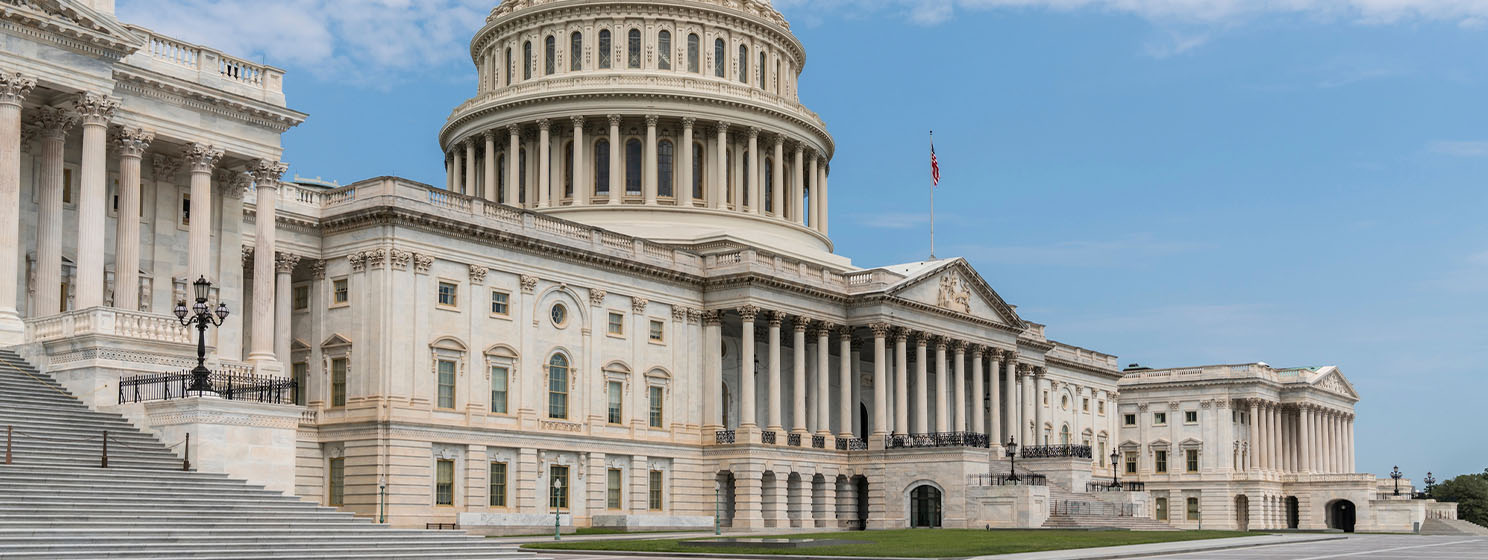|
Getting your Trinity Audio player ready...
|
U.S. legislators are gearing up for a frenzied push to pass digital asset legislation this month, while crypto firms race to secure national banking charters.
- Congress getting serious about getting bills on Trump’s desk
- Lummis still pushing crypto tax relief
- WLF could be tradable, $TRUMP and USD1 making Tron debuts
- Public cares/doesn’t care about Trump’s crypto profiteering
- Secret Service reveals $400 million crypto haul
- Ripple seeks national banking charter
- Silicon Valley Bank 2.0 in the works
On Wednesday, July 9, the U.S. Senate Banking Committee will hold its latest hearing on digital asset market structure regulation. The hearing, titled ‘From Wall Street to Web3: Building Tomorrow’s Digital Asset Markets,’ will feature testimony from Ripple Labs CEO Brad Garlinghouse, Blockchain Association CEO Summer Mersinger, Paradigm partner Dan Robinson, and Jonathan Levin from blockchain analysts Chainalysis.
The Senate has yet to introduce its market structure legislation, having released only a set of ‘principles’ detailing its priorities. However, a discussion draft is expected to arrive shortly before the hearing and is expected to resemble the Responsible Financial Innovation Act introduced in 2022 by Senators Kirsten Gillibrand (D-NY) and Cynthia Lummis (R-WY).
That bill, like the companion legislation in the House of Representatives (CLARITY Act), would hand primary responsibility for regulating digital assets to the Commodity Futures Trading Commission (CFTC), with a lesser role for the Securities and Exchange Commission (SEC). The CFTC reports to the Senate Agriculture Committee, which will require its hearings and input into the legislative sausage-making.
CLARITY has successfully completed two House committee markup sessions, but the bill will get renewed attention starting July 14, kicking off what the House has christened ‘Crypto Week.’ This will involve House consideration of CLARITY as well as the Senate’s recently approved stablecoin legislation (GENIUS Act) and Rep. Tom Emmer’s revived Anti-CBDC Surveillance State Act.
House Majority Leader Steve Scalise (R-LA) expressed optimism that all three bills will make it to the floor for a vote by the full House next week. Assuming the vote is in the affirmative, GENIUS would head to President Trump’s desk to be signed into law. Successful votes on CLARITY and CBDCs would send both of those bills to the Senate, and GENIUS sponsor Sen. Bill Hagerty (R-TN) said he looked forward to “working with my colleagues to move the CLARITY act through the Senate in short order.”
The House appears to have folded on its previously stated plan to harmonize GENIUS with its own stablecoin bill (STABLE), choosing instead to fast-track GENIUS in keeping with Trump’s stated wishes. Whether that means the Senate is prepared to return the favor and accept CLARITY with minimal revisions remains to be seen.
Hot tax break summer
Meanwhile, Lummis isn’t finished convincing her colleagues to pass crypto-specific tax reform. Despite watching her tax amendments fail to attach themselves to Trump’s ‘big, beautiful’ spending bill, Lummis has now introduced a standalone bill to “amend the Internal Revenue Code of 1986 to reform the treatment of digital assets.”
The bill would eliminate taxes on capital gains resulting from individual crypto sales, exchanges, or dispositions totaling less than $300, with a cumulative cap of $5,000 per year, after which no more free rides are allowed. The bill would also classify digital asset lending agreements as “generally not taxable events,” effectively lumping tokens with existing securities lending rules.
Block reward miners would no longer have to recognize mining income until the tokens generated by their activities are sold or disposed of. Similar policies would apply to digital asset staking, based on the belief that assets shouldn’t be taxed until their owner enjoys the actual realization of economic benefit.
There are other aspects, but it’s unclear whether Lummis has the juice to push her bill through the Senate Finance Committee. Lummis appears to be treating her “fully paid-for” bill as a discussion draft, stating at the time of its release that she welcomes public comments on its language.
Trump crypto ventures shaking things up
On America’s birthday, the Trump family’s decentralized finance (DeFi) project World Liberty Financial (WLF) announced that it had opened voting on a proposal to make its ‘governance’ token WLFI tradable for the first time. The plan was first disclosed at last month’s Permissionless conference by WLF Co-Founder Zak Folkman.
As of now, WLFI holders lack the ability to do anything with their tokens other than vote on WLF proposals. But that prohibition appears about to end, given the current state of the voting.
The proposal notes that some WLFI supply (30%, according to the WLFI’ gold paper’) was allocated to “early supporters,” and “a portion of these tokens will be eligible to be unlocked upon launch of tradability.” There will be a “second vote … to determine the unlock and release schedule” of the remaining tokens. Timing and “any eligibility requirements for unlock” are TBD.
However, “founders, team, and advisor tokens will not be unlocked initially … to demonstrate long-term commitment to the project and alignment with the success of the protocol.” Said advisors include Justin Sun, founder of the TRON network, who became a WLF advisor after buying $75 million worth of WLFI shortly after the token’s launch.
WLF describes the tradable vote as “a defining moment,” noting that a ‘yes’ vote means “WLFI’s governance framework will enable more token holders to participate directly in protocol decisions. This includes voting on emissions, ecosystem incentives, and future treasury actions.”
While WLFI was WLF’s first baby, its website was recently designed to focus almost solely on USD1, the dollar-denominated stablecoin WLF launched this spring. On July 7, Justin Sun announced the launch of USD1 trading pairs on his sun.io DeFi platform. The first three pairs are USDT (Tether), TRON’s native token TRX, and NFT, the APENFT Foundation token, which is the primary token for trading non-fungible tokens (NFTs) on TRON.
Meanwhile, the $TRUMP memecoin, the president launched exclusively on the Solana network a couple of days before his inauguration in January, is now coming to TRON. On July 7, the company behind $TRUMP (GetTrumpMemes) teased the token’s arrival, a move that was swiftly echoed by Sun, although neither party offered details on an expected timeline for the TRON debut.Survey says… whatever you want it to say
Despite the brazen profit-taking of some of Trump’s ventures, the general public doesn’t appear to care. At least, according to a survey commissioned by Cedar Innovation Fund, a pro-crypto’ dark money’ Group whose backers are uneager to declare themselves publicly.
The survey, involving 1,000 voters in mid-June, found that 57% had heard “nothing or not that much” about Trump making big bank off his $TRUMP memecoin. An even larger slice (60%) was largely unfamiliar with the fact that Trump is making millions from other crypto ventures like WLF.
Cedar, which helped defeat crypto critic Sen. Sherrod Brown (D-OH) in the 2024 election, is no shrinking violet, having recently issued a pointed statement to Senate leaders urging them to “avoid political games” and pass GENIUS post-haste.
Cedar claims the results of its survey show Democrats “aren’t breaking through” with the American public in their efforts to paint Trump as a crypto grifter.
However, a different survey from around the same period by the progressive group Data for Progress found very different results. In this poll, 62% of respondents wanted Congress to amend GENIUS to include language preventing Trump and his family from “personally benefiting” from crypto projects.
Secret Service crypto wallet filled to bursting
The list of Trump-linked crypto ventures has grown so extensive that individuals could be forgiven for not knowing which of his crypto pitches are legit.
On July 2, the U.S. Attorney for the District of Columbia filed a civil complaint seeking to seize nearly 40,400 USDT it claims are part of over $250,000 fraudulently obtained by scammers posing as Steve Witkoff, a longtime friend of the president, WLF co-founder, and co-chair of Trump’s inaugural committee.
By changing one letter in an email address, the government says the perpetrators imitated a legitimate address to solicit donations to the bogus inaugural fund. This scam worked to perfection on December 26, 2025, obtaining a total of $250,300 in USDT from a single donor.
While the bulk of these funds was immediately transferred to “numerous” other digital wallets, Tether was able to freeze 20,336 USDT in a wallet flagged by the government, while the Binance digital asset exchange was able to freeze another 20,024 USDT that the apparently Nigerian-based perp transferred to their account.
Presumably, the U.S. government intends to return the seized tokens to their rightful owner, which isn’t always a given. On July 5, Bloomberg reported that the U.S. Secret Service’s Global Investigative Operations Center (GIOC) has amassed a haul of nearly $400 million worth of tokens seized as the proceeds of crime over the past decade.
That nine-figure sum apparently includes the $225.3 million the Secret Service and FBI recovered in June from a money laundering network linked to crypto investment fraud schemes. “Much” of the GIOC’s nine-figure sum reportedly resides in a single cold-storage wallet, a perhaps risky gambit should an absent-minded purge suddenly leave GIOC staff sifting through a landfill like that sad sack Brit.
Speaking of the government’s digital wallets, July 22 will mark 180 days since Trump issued an executive order establishing the President’s Working Group on Digital Assets (aka ‘crypto council’). The Group, chaired by Trump’s ‘AI & Crypto Czar’ David Sacks, was given 180 days in which to recommend regulatory and legislative proposals, including details on the president’s Strategic Bitcoin Reserve and the U.S. Digital Asset Stockpile, which Trump announced in March.
It’s unclear whether this report will ever be made public. The administration previously directed the Treasury Department to submit a report on all the digital assets currently held by government agencies—the tokens that will make up the Reserve/Stockpile—but later hedged that the government was under no obligation to share this report with the public.
Ripple seeks bank charter
On July 2, Ripple became the latest digital asset firm to announce plans to pursue a U.S. national bank charter from the Treasury Department’s Office of the Comptroller of the Currency (OCC). From his X account, CEO Brad Garlinghouse said the plan was intended to boost trust in RLUSD, the stablecoin Ripple issued last December.
Garlinghouse said Ripple had also applied for a Federal Reserve master account (via Ripple’s Standard Custody & Trust Company subsidiary). Garlinghouse said a master account “would allow us to hold $RLUSD reserves directly with the Fed and provide an additional layer of security to future proof trust in RLUSD.”
Just days before Ripple’s announcement, another stablecoin issuer, Circle (NASDAQ: CRCL), announced its bank charter application. Circle said part of the appeal of a charter would be the ability to self-custody the fiat reserves backing the $62 billion in USDC tokens.
Pure stablecoin issuers have limited revenue-generating capacity, relying on interest on the Treasury bills and other fiat assets backing their circulating stablecoins. Any opportunity to cut costs—including by settling payments directly and thus cutting out the banking middlemen—needs to be taken.
At present, only one digital asset firm, Anchorage Digital, has been approved for a national bank charter.
Backward, it spells a phonetic ‘robbery’
Also in the banking charter hunt is Erebor, a proposed tech-focused bank backed by some major Silicon Valley luminaries. The Financial Times first reported on the venture, which is backed by Peter Thiel and his Founders Fund, Palantir co-founder Joe Lonsdale, and Palmer Luckey, co-founder of Anduril, another high-tech military contractor.
Erebor’s backers reportedly want the bank to fill the role formerly played by Silicon Valley Bank (SVB), which collapsed in March 2023. The idea is that Erebor would cater to tech companies focused on digital assets, AI, defense, and manufacturing, while also banking the individuals who work at or invest in these firms.
Erebor’s filing states it intends to become “the most regulated entity conducting and facilitating stablecoin transactions.” Jacob Hirshman, a former Circle adviser, has been tipped as Erebor’s co-CEO alongside Owen Rapaport, co-founder/CEO of Aer Compliance, a crypto trading pre-clearance and post-trade monitoring solutions company.
The irony here is high, as SVB’s failure is believed to have been sparked by a run on its deposits led by Thiel’s Founders Fund. Thiel claimed innocence at the time, noting that he’d left $50 million of his own funds at SVB. However, it’s worth noting that Thiel’s net worth is over $20 billion, making that sacrifice a lot easier to take.
At any rate, Thiel got his $50 million back when the Federal Deposit Insurance Corporation (FDIC) rode to SVB’s rescue. USDC issuer Circle was the biggest beneficiary of this bailout, having left $3.3 billion in a single SVB account that was insured only up to $250,000.
Not everyone is convinced that granting tech/crypto firms access to national bank charters and Fed master accounts is a good thing. Bloomberg’s Paul Davies issued an op-ed on Monday warning that the 2023 failures of SVB and similar banks (Silvergate, Signature) were in part due to their focus on “economically sensitive industries that are highly correlated to each other, and they lacked diversification of funding.”
Davies goes on to describe that narrow focus as “a bad business model” that is “much more significant in explaining the 2023 failures than depositor fears about unrealized losses on bonds, or the role of social media in transmitting panic … Circle, Erebor and the rest look like they’re running straight back toward this bad business model trap.”
Watch: Teranode is the digital backbone of Bitcoin

 01-10-2026
01-10-2026 




